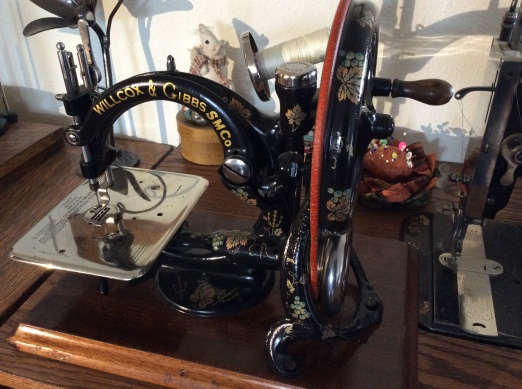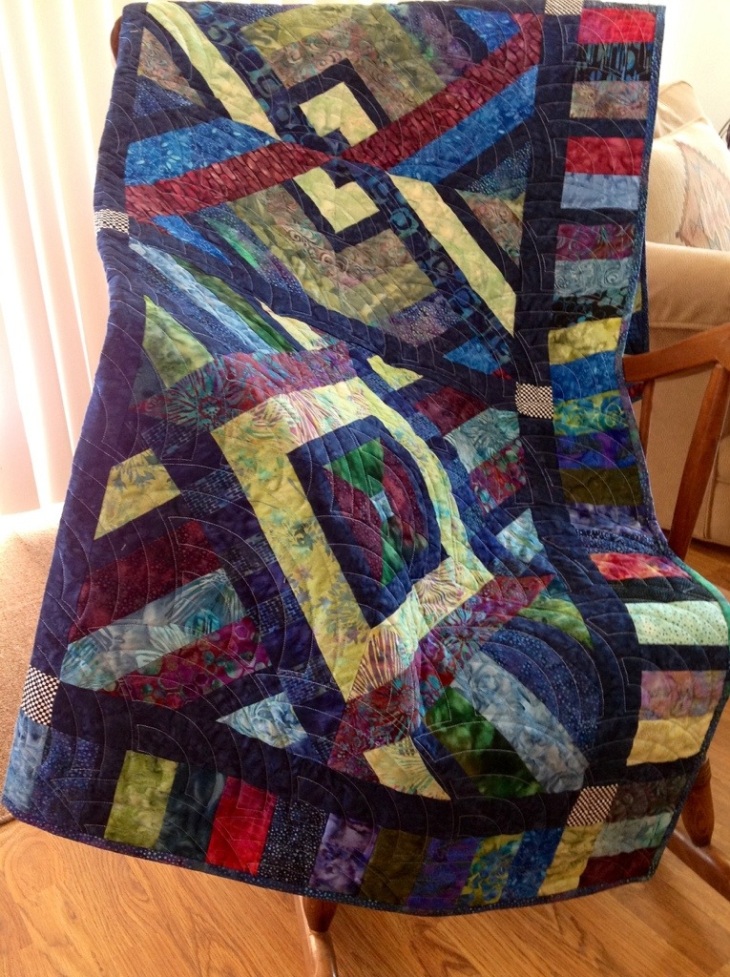 The first of seven Willcox & Gibbs chain stitchers that now reside with me arrived dirty and a bit rusty, but beautiful nonetheless. Only traces of paint remained on the machine and the hand crank. Some collectors shrink in horror at the mere mention of painting or “restoring” an antique sewing machine. I have a hot rod red Singer 221, and a purple glitter Singer 222, and love them. I think protecting the outside is just as important as maintaining the moving parts, and while black is nice, I am pro choice when repainting a beat up machine. But back to the Willcox and Gibbs. I bought a “restored” Willcox and Gibbs chain stitcher on an online auction site, then sent the seller a hand crank to paint to match. He asked me if I knew it was a Coalbrookdale handcrank. I did not. I subsequently read about them on Alex Askaroff’s Willcox & Gibbs page and learned that they account for only 1 percent of the W&G hand cranks ever made. I have since acquired two more, both of which remain unpainted for now.
The first of seven Willcox & Gibbs chain stitchers that now reside with me arrived dirty and a bit rusty, but beautiful nonetheless. Only traces of paint remained on the machine and the hand crank. Some collectors shrink in horror at the mere mention of painting or “restoring” an antique sewing machine. I have a hot rod red Singer 221, and a purple glitter Singer 222, and love them. I think protecting the outside is just as important as maintaining the moving parts, and while black is nice, I am pro choice when repainting a beat up machine. But back to the Willcox and Gibbs. I bought a “restored” Willcox and Gibbs chain stitcher on an online auction site, then sent the seller a hand crank to paint to match. He asked me if I knew it was a Coalbrookdale handcrank. I did not. I subsequently read about them on Alex Askaroff’s Willcox & Gibbs page and learned that they account for only 1 percent of the W&G hand cranks ever made. I have since acquired two more, both of which remain unpainted for now.
My antique sewing machines are not just eye candy, they are working machines. The W&G fits comfortably on a lap desk and I can piece quilt blocks noiselessly while watching TV. I made a strip pieced quilt from Three Dudes Quilting on two antique machines and a vintage machine, and quilted it on a longarm. The blocks were pieced on a W&G hand crank, and the top was assembled on a National Two Spool treadle. The binding was attached on a Necchi BU electric. Why I didn’t think to attach the binding on the Davis Vertical Feed is a mystery, but I will certainly do that next time.


